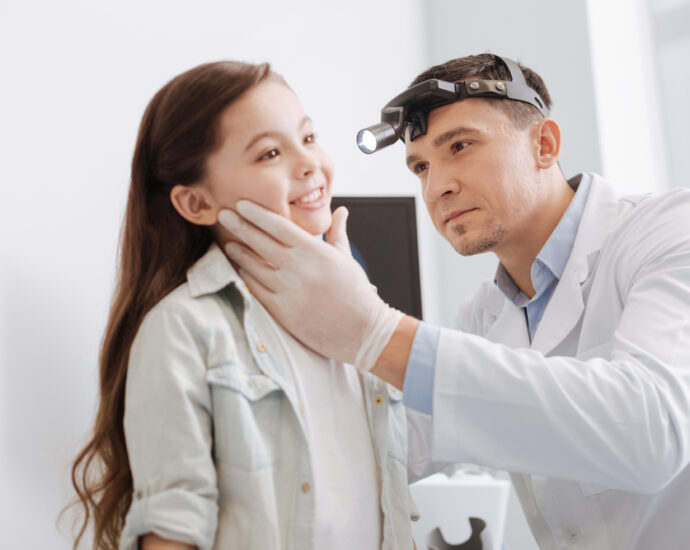Ear infections are one of the most common ailments in childhood, affecting millions of children each year. Known medically as otitis media, these infections are often painful and can cause sleepless nights for children and worry for parents. Thirty years ago, the typical course of treatment was almost automatic: a visit to the pediatrician and a prescription for antibiotics. But today, things have changed.
Modern medicine has significantly shifted the approach to diagnosing and treating childhood ear infections, aiming to reduce unnecessary antibiotic use while improving long-term outcomes. This article explores how treatment strategies have evolved over the last three decades, what’s driving the change, and what parents can expect from current best practices.
Page Contents
Understanding Ear Infections
An ear infection occurs when the middle ear becomes inflamed, usually due to bacteria or viruses. It often follows a cold or upper respiratory infection, as the Eustachian tube (which connects the middle ear to the throat) becomes blocked, allowing fluid to build up behind the eardrum.
- Ear pain
- Fever
- Irritability or crying in infants
- Tugging at the ear
- Trouble hearing or sleeping
- Fluid drainage from the ear
Then: Ear Infection Treatment in the 1990s
In the 1990s, antibiotics were the go-to treatment for nearly every suspected ear infection. Pediatricians often prescribed medications like amoxicillin even without strong evidence of bacterial infection. This aggressive approach was based on the belief that antibiotics would prevent complications such as hearing loss, ruptured eardrums, or recurrent infections.
Key Features of 1990s Treatment:
- Immediate antibiotic prescription for nearly all children
- Little distinction between viral and bacterial infections
- Minimal use of observation or watchful waiting
- Frequent antibiotic resistance due to overuse
- Use of tympanostomy tubes (ear tubes) in recurrent cases, sometimes quickly after repeated infections
While this approach seemed proactive, it had drawbacks: overprescribing antibiotics contributed to a rise in antibiotic-resistant bacteria, unnecessary side effects, and a reactive—not preventive—treatment philosophy.
Now: A Shift Toward Watchful Waiting and Targeted Treatment
Modern treatment guidelines reflect a more cautious and evidence-based approach. The American Academy of Pediatrics (AAP) updated its guidelines in 2004 and again in 2013 to promote observation before prescribing antibiotics, especially in mild cases and in children over 2 years old.
Key Elements of Today’s Approach:
- Watchful Waiting
- In many cases, doctors recommend monitoring symptoms for 48 to 72 hours before prescribing antibiotics.
- This is based on findings that most ear infections resolve on their own, especially those caused by viruses.
- Age-Based Treatment
- Children under 6 months or those with severe symptoms are still treated promptly with antibiotics.
- Children aged 6 months to 2 years with mild symptoms may be observed, depending on the diagnosis.
- Children over 2 years with mild symptoms are often monitored unless the infection worsens.
- Precise Diagnosis
- Doctors now use otoscopes with pneumatic capabilities to assess middle ear fluid and inflammation.
- They are more careful to distinguish between true bacterial infections and viral illnesses that may mimic ear infections.
- Targeted Antibiotic Use
- When antibiotics are prescribed, amoxicillin remains the first choice due to its effectiveness and low side-effect profile.
- In cases of allergy or resistance, alternatives like cefdinir or azithromycin may be used.
- Shorter antibiotic courses (5–7 days) are now common for mild infections, compared to 10-day courses in the past.
- Focus on Pain Management
- Today’s protocols emphasize controlling pain and fever with over-the-counter medications like acetaminophen or ibuprofen, especially during the initial observation period.
- Vaccination
- The introduction of pneumococcal conjugate vaccines (e.g., Prevnar 13) and influenza vaccines has reduced the number of bacterial ear infections significantly.
- These vaccines protect against pathogens that commonly cause otitis media.
The Role of Ear Tubes Today
Tympanostomy tubes are still used for recurrent or persistent middle ear fluid that affects hearing or causes frequent infections. However, the criteria for placing tubes are more conservative than in previous decades.
Current Guidelines:
- Considered after 3 infections in 6 months or 4 in a year
- Also used if fluid remains for more than 3 months and impairs hearing
This approach avoids unnecessary surgery and encourages natural resolution whenever possible.
Why the Change?
Several factors have driven this evolution in treatment:
- Antibiotic resistance awareness: The overuse of antibiotics in the 1990s led to resistant strains of bacteria, prompting a global public health response.
- Evidence-based guidelines: Studies showed that many ear infections resolve without antibiotics and that overuse causes more harm than good.
- Improved diagnostic tools: Doctors now have better methods to evaluate the severity of infections.
- Parental education: Parents today are better informed and more accepting of watchful waiting if properly advised.
What Parents Should Know
Parents play a critical role in managing their child’s ear infections today. Understanding the rationale behind watchful waiting can reduce frustration and prevent unnecessary treatments.
Tips for Parents:
- Monitor symptoms and follow your doctor’s guidance on observation or medication.
- Use pain relievers as directed to keep your child comfortable.
- Encourage good hygiene to reduce the spread of viruses.
- Keep up with recommended vaccines to reduce infection risk.
- Avoid requesting antibiotics “just in case.”
Conclusion
Childhood ear infection treatment has come a long way in the last 30 years. From automatic prescriptions in the 1990s to today’s cautious, evidence-based approach, pediatric care has shifted toward better outcomes with fewer side effects.
While antibiotics still have their place, especially in severe or prolonged infections, many cases can resolve with time, comfort measures, and monitoring. This modern approach not only protects children’s health today but also preserves the effectiveness of antibiotics for future generations.
READ MORE: Child Growth Monitoring: Why Doctors Monitor Children’s Height and Weight at Well Visits
Sources:
https://www.nhs.uk/conditions/ear-infections/
https://publications.aap.org/pediatrics/article/131/3/e964/30912/The-Diagnosis-and-Management-of-Acute-Otitis-Media?autologincheck=redirected
https://my.clevelandclinic.org/health/treatments/15609-ear-tubes-tympanostomy
